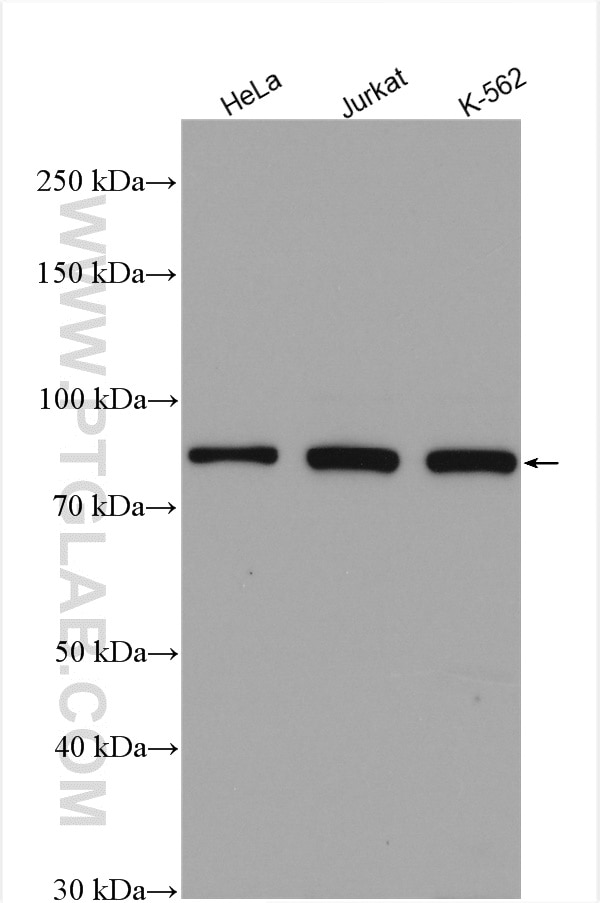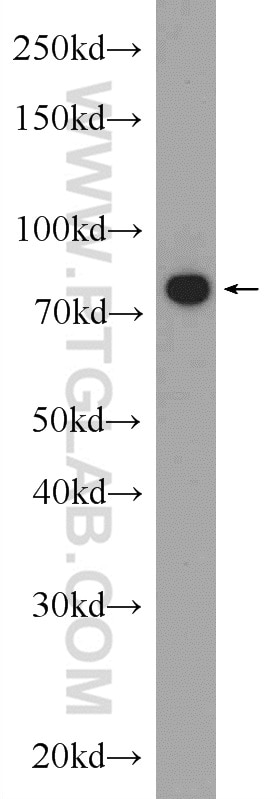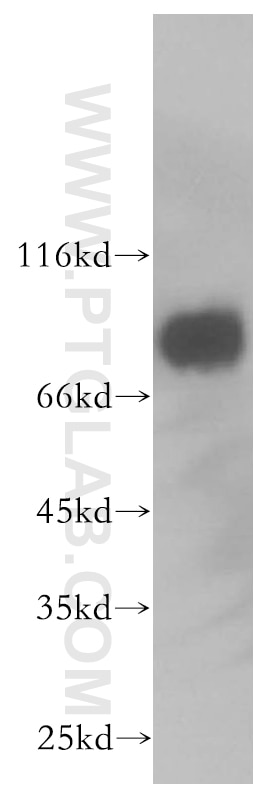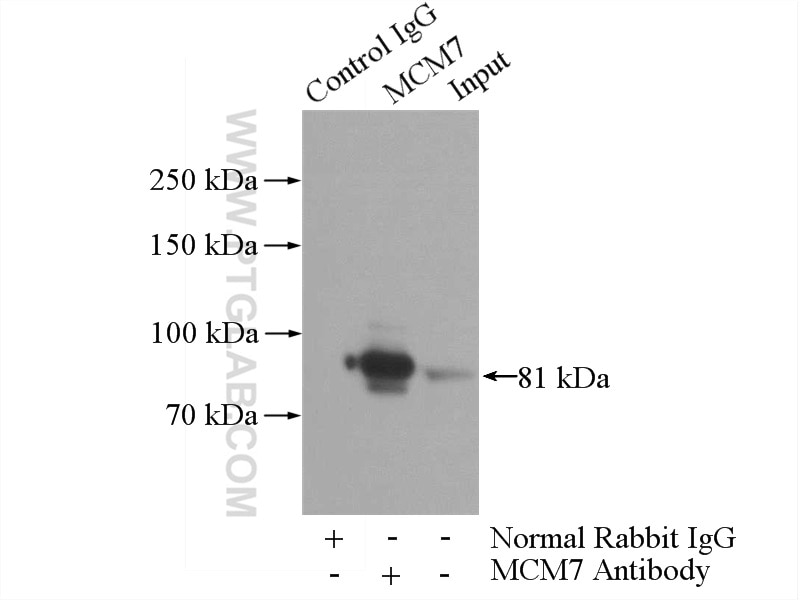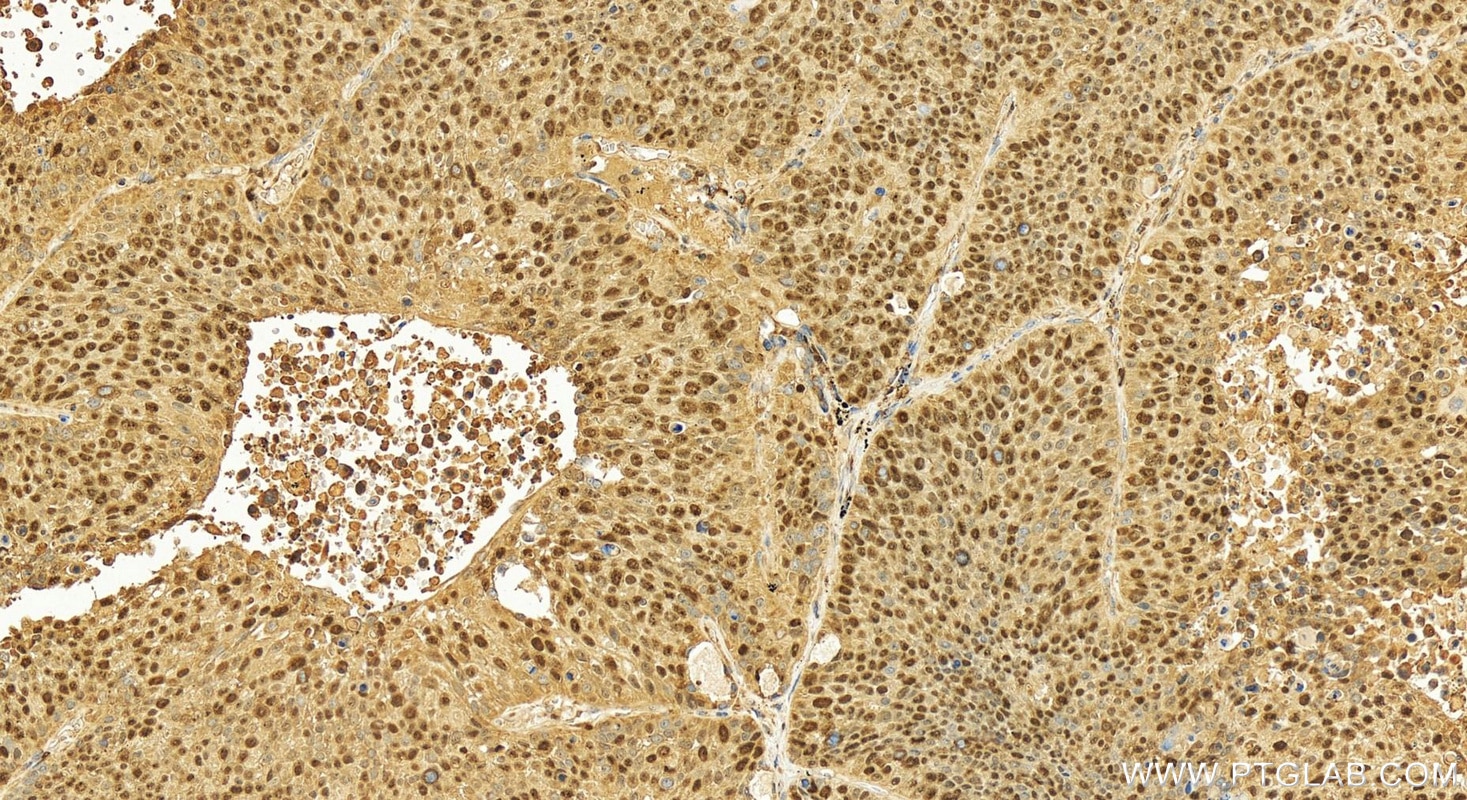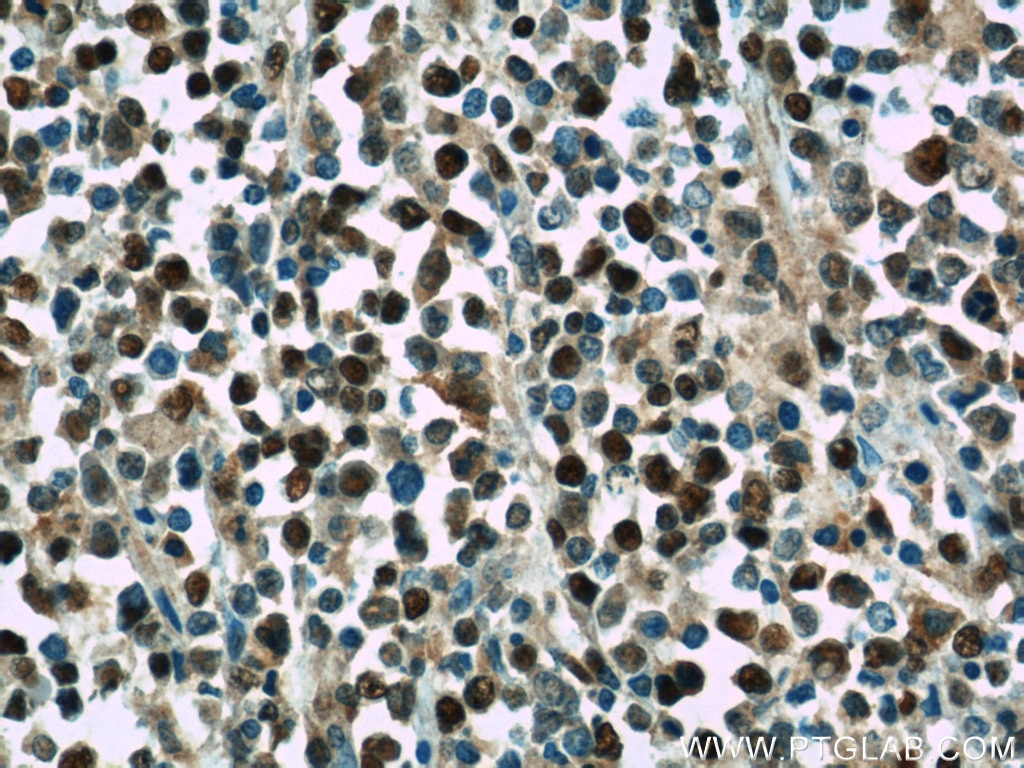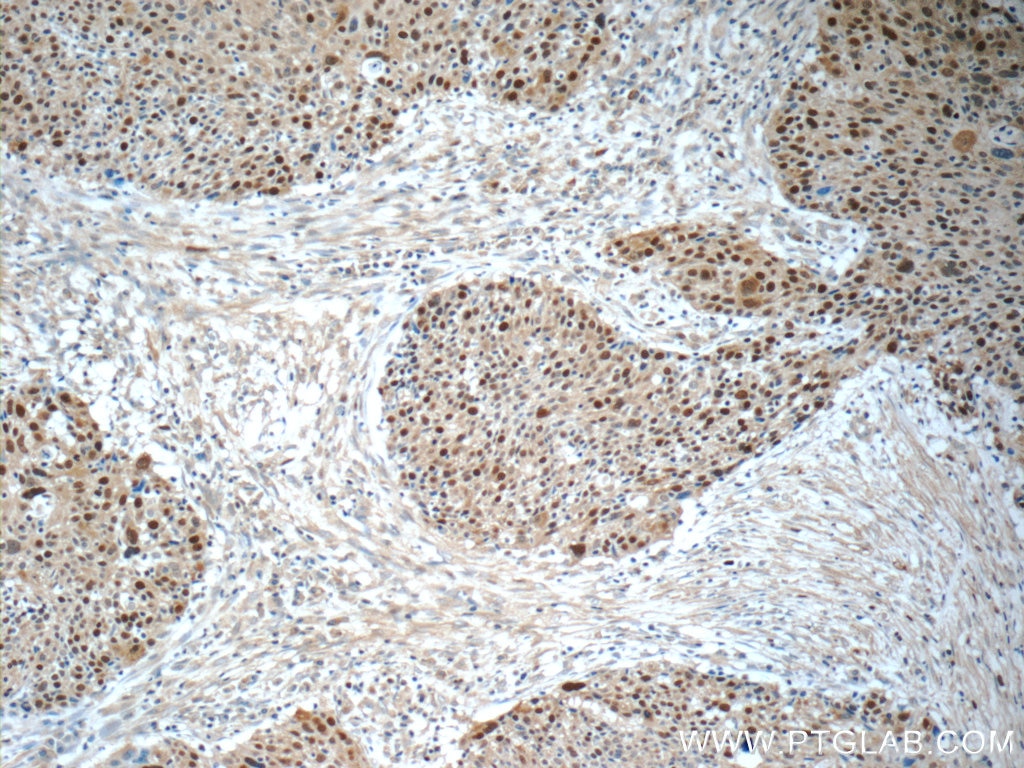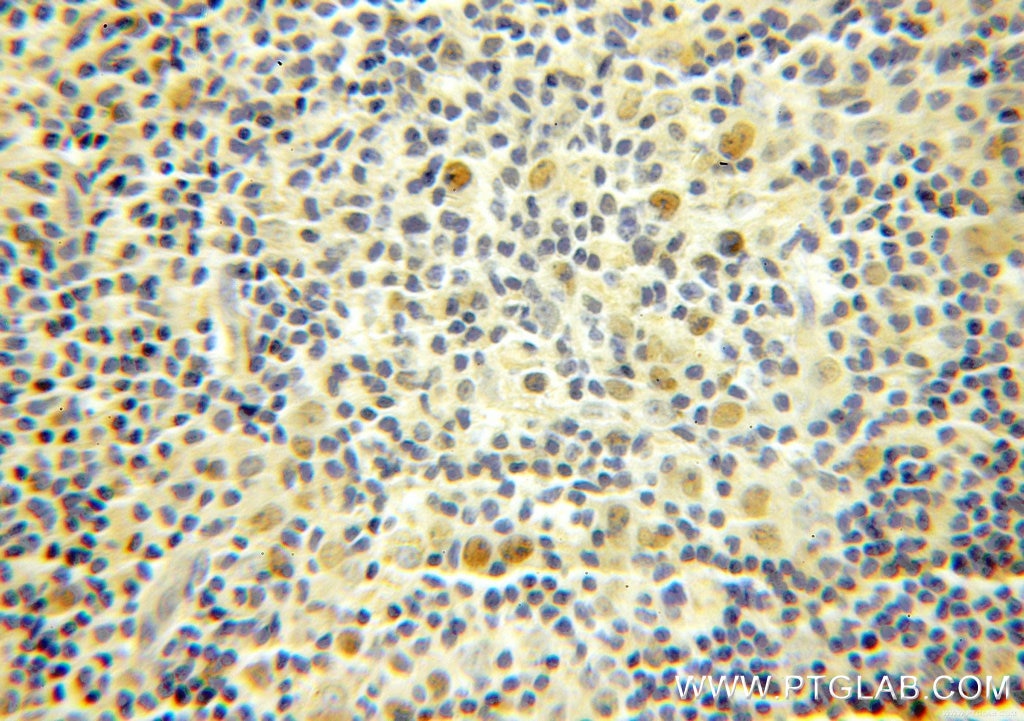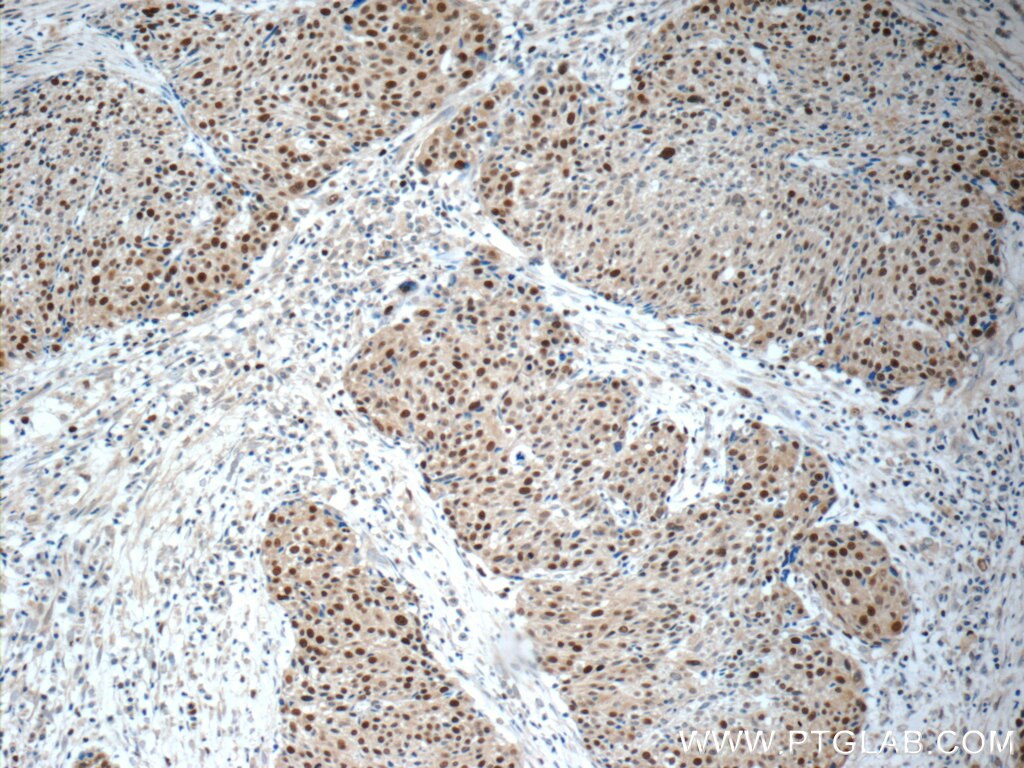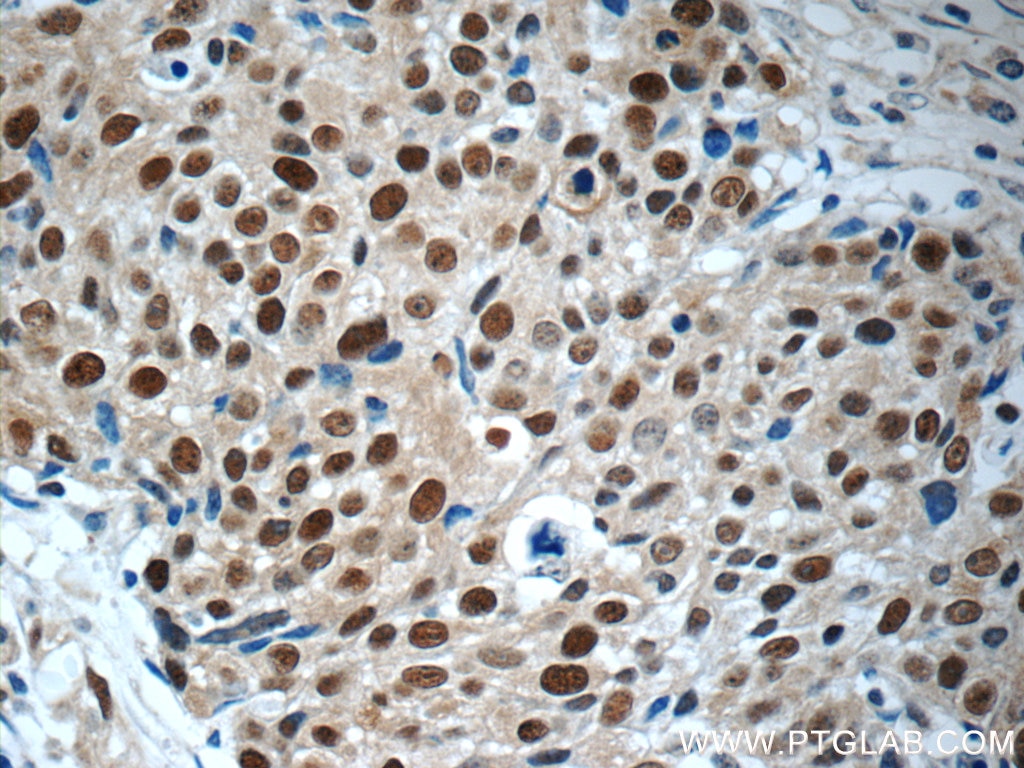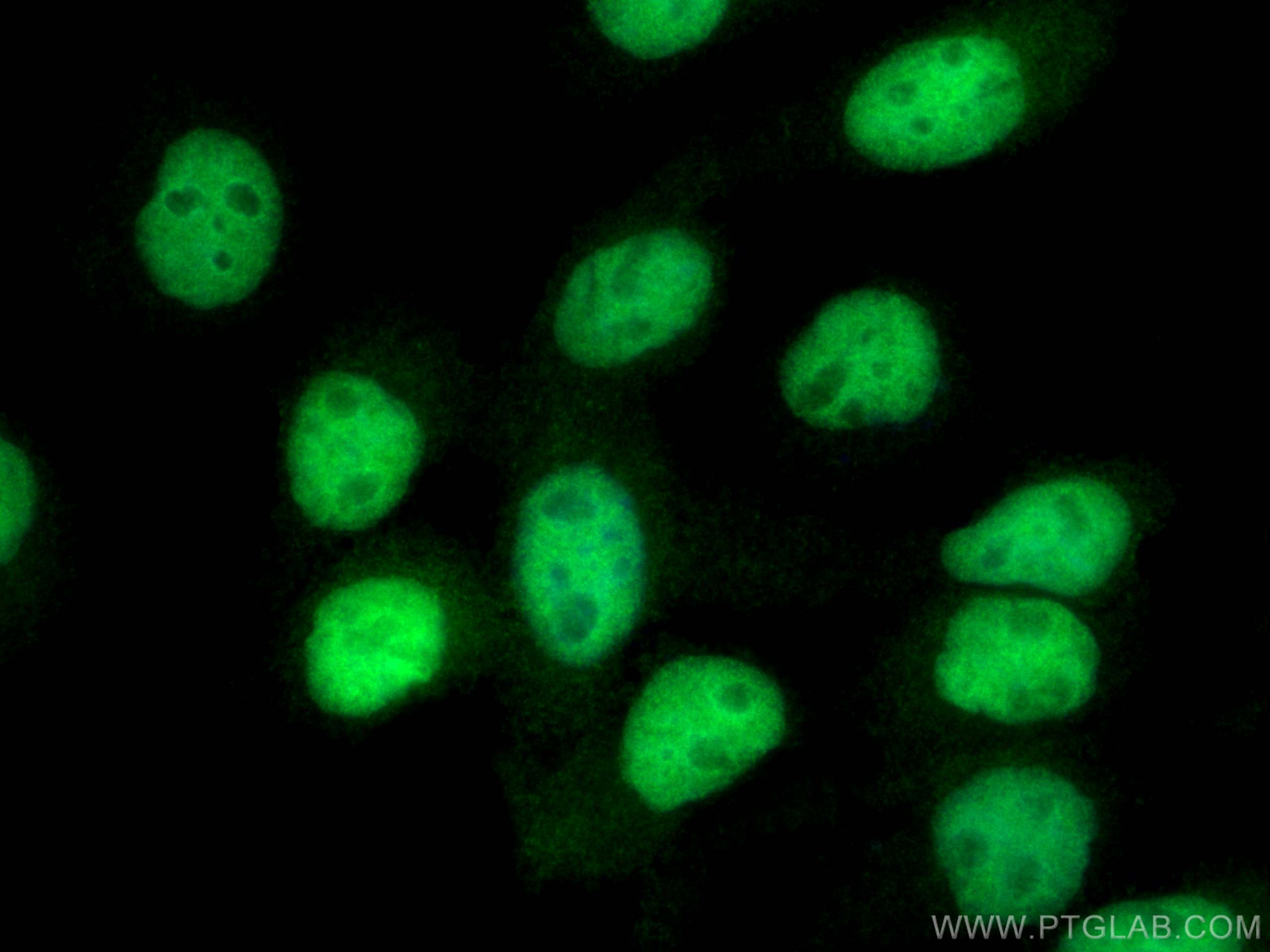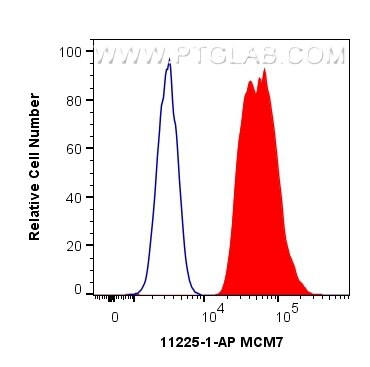MCM7 Polyklonaler Antikörper
MCM7 Polyklonal Antikörper für WB, IHC, IF/ICC, FC (Intra), IP, ELISA
Wirt / Isotyp
Kaninchen / IgG
Getestete Reaktivität
human, Maus, Ratte
Anwendung
WB, IHC, IF/ICC, FC (Intra), IP, CoIP, ELISA
Konjugation
Unkonjugiert
Kat-Nr. : 11225-1-AP
Synonyme
Geprüfte Anwendungen
| Erfolgreiche Detektion in WB | HeLa-Zellen, Jurkat-Zellen, K-562-Zellen, MCF-7-Zellen, NIH/3T3-Zellen |
| Erfolgreiche IP | NIH/3T3-Zellen |
| Erfolgreiche Detektion in IHC | human lung squamous cell carcinoma tissue, humanes Lungenkarzinomgewebe, humanes Lymphomgewebe Hinweis: Antigendemaskierung mit TE-Puffer pH 9,0 empfohlen. (*) Wahlweise kann die Antigendemaskierung auch mit Citratpuffer pH 6,0 erfolgen. |
| Erfolgreiche Detektion in IF/ICC | A431-Zellen |
| Erfolgreiche Detektion in FC (Intra) | HepG2-Zellen |
Empfohlene Verdünnung
| Anwendung | Verdünnung |
|---|---|
| Western Blot (WB) | WB : 1:5000-1:50000 |
| Immunpräzipitation (IP) | IP : 0.5-4.0 ug for 1.0-3.0 mg of total protein lysate |
| Immunhistochemie (IHC) | IHC : 1:200-1:800 |
| Immunfluoreszenz (IF)/ICC | IF/ICC : 1:50-1:500 |
| Durchflusszytometrie (FC) (INTRA) | FC (INTRA) : 0.40 ug per 10^6 cells in a 100 µl suspension |
| It is recommended that this reagent should be titrated in each testing system to obtain optimal results. | |
| Sample-dependent, check data in validation data gallery | |
Veröffentlichte Anwendungen
| KD/KO | See 2 publications below |
| WB | See 23 publications below |
| IHC | See 5 publications below |
| IF | See 1 publications below |
| CoIP | See 1 publications below |
Produktinformation
11225-1-AP bindet in WB, IHC, IF/ICC, FC (Intra), IP, CoIP, ELISA MCM7 und zeigt Reaktivität mit human, Maus, Ratten
| Getestete Reaktivität | human, Maus, Ratte |
| In Publikationen genannte Reaktivität | human, Maus |
| Wirt / Isotyp | Kaninchen / IgG |
| Klonalität | Polyklonal |
| Typ | Antikörper |
| Immunogen | MCM7 fusion protein Ag1730 |
| Vollständiger Name | minichromosome maintenance complex component 7 |
| Berechnetes Molekulargewicht | 81 kDa |
| Beobachtetes Molekulargewicht | 81 kDa |
| GenBank-Zugangsnummer | BC013375 |
| Gene symbol | MCM7 |
| Gene ID (NCBI) | 4176 |
| Konjugation | Unkonjugiert |
| Form | Liquid |
| Reinigungsmethode | Antigen-Affinitätsreinigung |
| Lagerungspuffer | PBS with 0.02% sodium azide and 50% glycerol |
| Lagerungsbedingungen | Bei -20°C lagern. Nach dem Versand ein Jahr lang stabil Aliquotieren ist bei -20oC Lagerung nicht notwendig. 20ul Größen enthalten 0,1% BSA. |
Hintergrundinformationen
MCM7, also named as CDC47 homolog or P1.1-MCM3, is a 719 amino acid protein, which belongs to the MCM family. MCM7 acts as component of the MCM2-7 complex (MCM complex) which is the putative replicative helicase essential for 'once per cell cycle' DNA replication initiation and elongation in eukaryotic cells. the MCM2-7 complex participates in the pre-replication complex formation and exhibits helicase activity which makes DNA unwind, and resulting in recruitment of DNA polymerases and initiation of DNA replication and elongation [PMID: 29463213 ]. An immunohistochemical study has shown that MCM7 is increased in HCC. Silencing of MCM7 with shRNA inhibits the malignant behavior of HCC cells via cell cycle arrest and apoptosis [[PMID: 29463213].
Protokolle
| PRODUKTSPEZIFISCHE PROTOKOLLE | |
|---|---|
| WB protocol for MCM7 antibody 11225-1-AP | Protokoll herunterladen |
| IHC protocol for MCM7 antibody 11225-1-AP | Protokoll herunterladenl |
| IF protocol for MCM7 antibody 11225-1-AP | Protokoll herunterladen |
| IP protocol for MCM7 antibody 11225-1-AP | Protokoll herunterladen |
| STANDARD-PROTOKOLLE | |
|---|---|
| Klicken Sie hier, um unsere Standardprotokolle anzuzeigen |
Publikationen
| Species | Application | Title |
|---|---|---|
Adv Sci (Weinh) Targeting CBX3 with a Dual BET/PLK1 Inhibitor Enhances the Antitumor Efficacy of CDK4/6 Inhibitors in Prostate Cancer | ||
Nucleic Acids Res DOCK7 protects against replication stress by promoting RPA stability on chromatin. | ||
Biomaterials Biocompatible PEGylated Gold nanorods function As cytokinesis inhibitors to suppress angiogenesis. | ||
Elife MCMBP promotes the assembly of the MCM2-7 hetero-hexamer to ensure robust DNA replication in human cells. | ||
J Nanobiotechnology Graphene quantum dots rescue angiogenic retinopathy via blocking STAT3/Periostin/ERK signaling. |
